This page contains affiliate links, meaning we earn a small commission on your purchase at no additional cost to you. Thank you for helping to support Sarah’s Vegan Kitchen!
My boyfriend, Eric, grew up in a big Jewish family in New York. We met and live in Colorado, so over the past few years I’ve done my best to recreate some cultural dishes for him to enjoy a taste of home from afar. These vegan sufganiyot (jelly donuts) are absolutely delicious, and not too difficult to make at all!
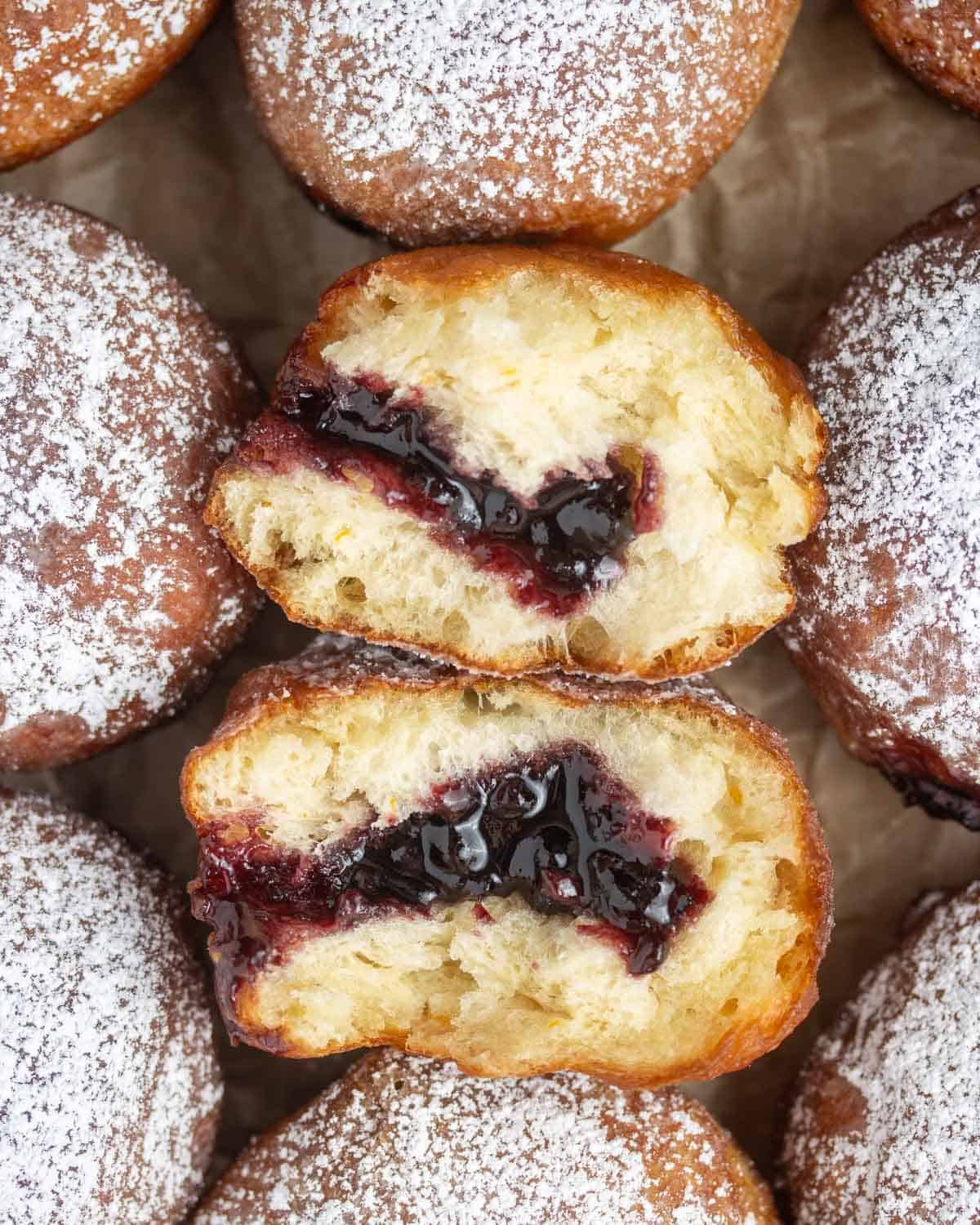
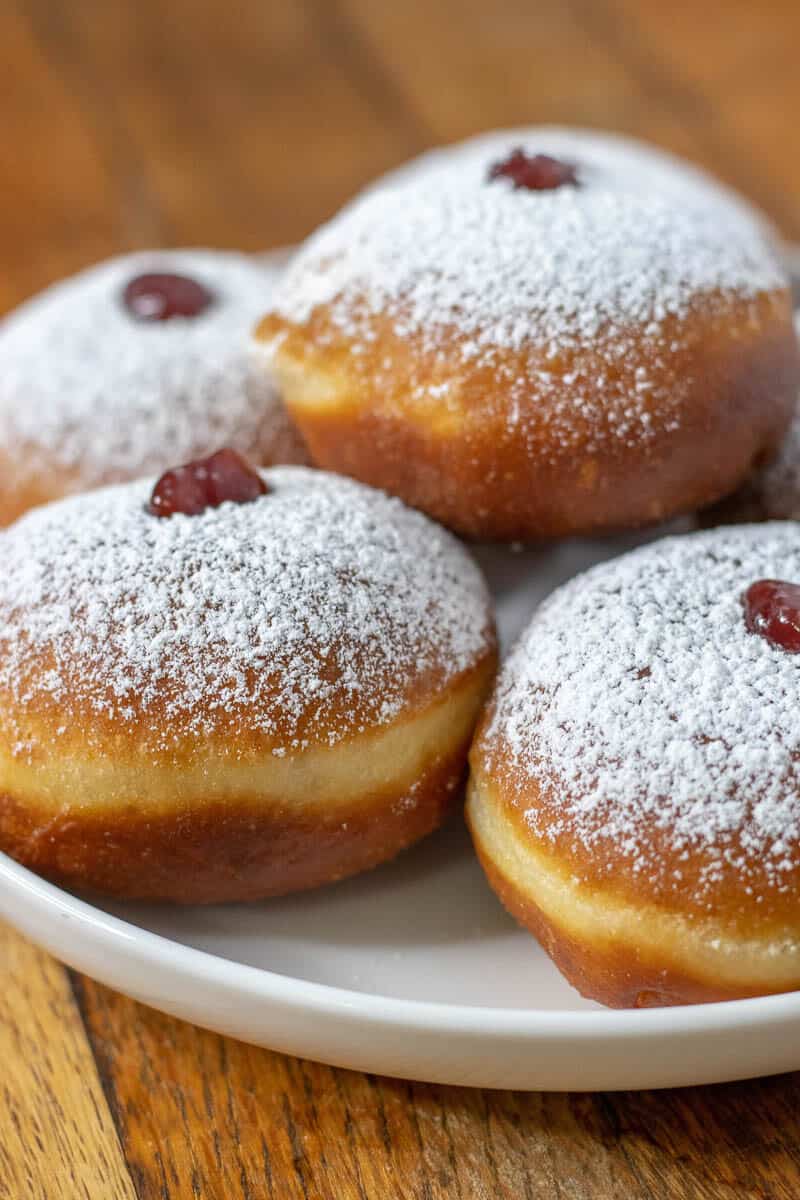
History of Sufganiyot
Sufganiyot (singular: sufganiyah) originated in Europe in the 1500s and by the 1800s, they were known as “Berliners” in Germany. Polish Jews developed their own version, called “ponchik”, which were fried in schmaltz (chicken fat) instead of lard, since lard isn’t kosher.
Over time, many Polish Jews immigrated to Israel, where they brought both their ponchik and their tradition of eating them on Hanukkah. In Israel, a new name, “sufganiyot”, was coined based on the Talmud’s description of a “spongy dough”.
Sufganiyot fit right into the already existent Jewish tradition of eating fried foods on Hanukkah.
Why Do Jews Eat Sufganiyot on Hanukkah?
Jewish people around the world eat fried foods during Hanukkah to celebrate a miracle that occurred over 2,000 years ago.
After Antiochus IV took over control of the kingdom of Judea, he prohibited Jews from practicing Judaism, attempting to force them to worship Greek gods. Eventually, the Jewish people revolted, regaining control of their city. Upon taking back the Second Temple, the Jews found all but one of their jugs of oil destroyed. The singular jug was only enough to keep the Menorah lit for one night, but it miraculously lasted eight nights.
To honor this story, Jews celebrate Hanukkah by eating foods that are fried in oil!
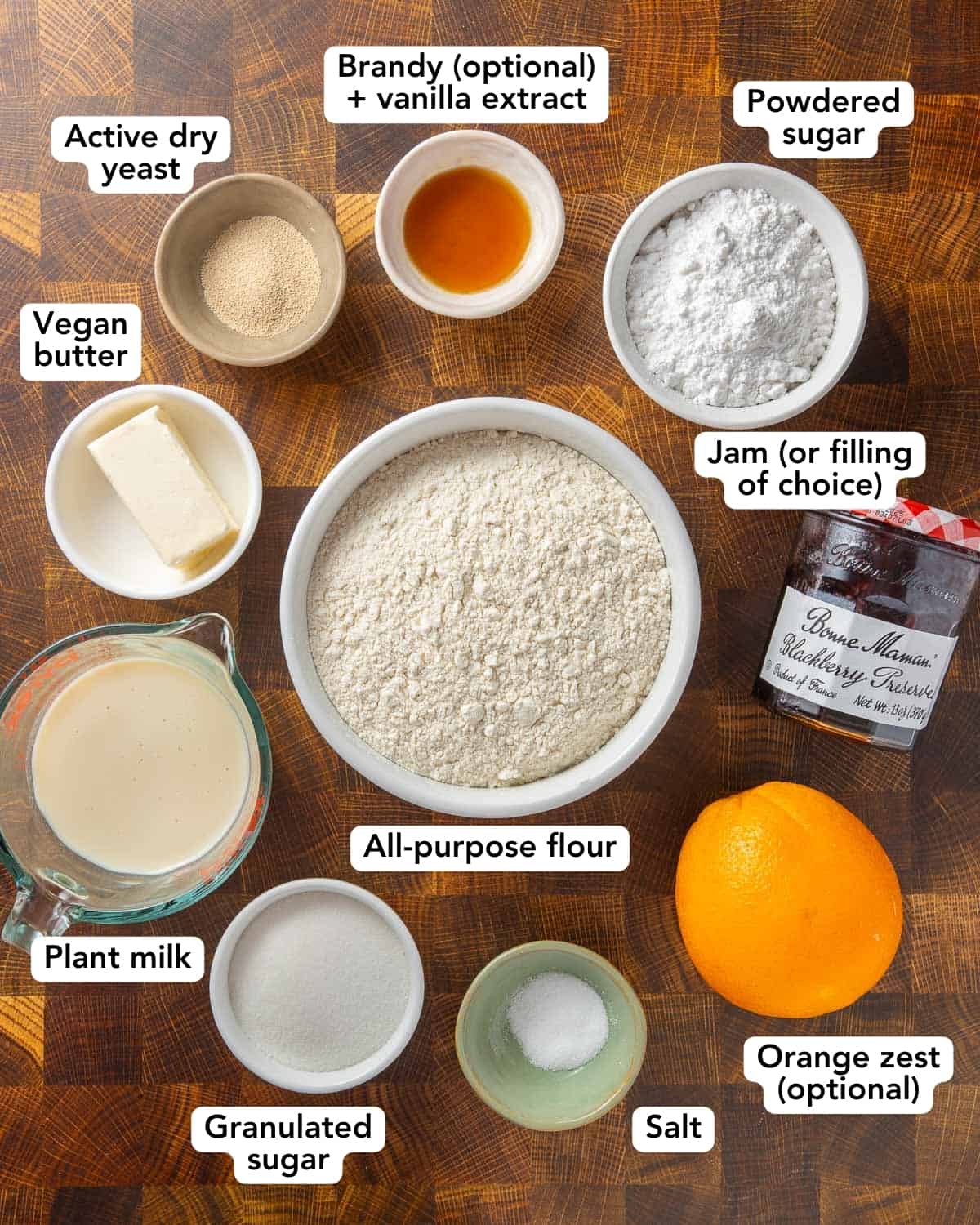
Ingredients for Vegan Sufganiyot
- Yeast – Active dry or instant yeast will both work similarly in this recipe. Make sure to proof it to make sure it’s still alive, especially if it’s been sitting in a cupboard for a long time.
- Plant milk – Any kind of non-dairy milk will most likely work in this recipe. I prefer to use unsweetened simply so I can control the amount of sugar in the recipe myself.
- Flour, sugar, salt – The usual staples. Regular all-purpose flour and plain granulated white sugar will work best in this recipe.
- Orange zest – Technically an optional ingredient, but one that makes these donuts taste extra special.
- Brandy – This is optional too, but it adds a little extra flavor that makes these taste more authentic. Don’t worry; it’s not enough to make these taste boozy.
- Vegan butter – Let this soften at room temperature so that it easily blends into the dough. In a pinch, you can substitute in a neutral-tasting vegetable oil.
- Jam or jelly – Any of your favorite kinds! You can also experiment with vanilla custard, chocolate pudding, a chocolate hazelnut spread, or really anything that sounds tasty to you that could be easily piped through a pastry bag.
- Frying oil – Use any neutral-flavored oil with a high enough smoke point. Some options: regular canola oil, sunflower oil, avocado oil, corn oil, or safflower oil.
How to Make Vegan Sufganiyot
- Proof the yeast. An important first step if you don’t bake often and the yeast has been sitting in a cupboard for awhile. This step (making sure it’s foamy and alive) will ensure that your batch of donuts rises beautifully.

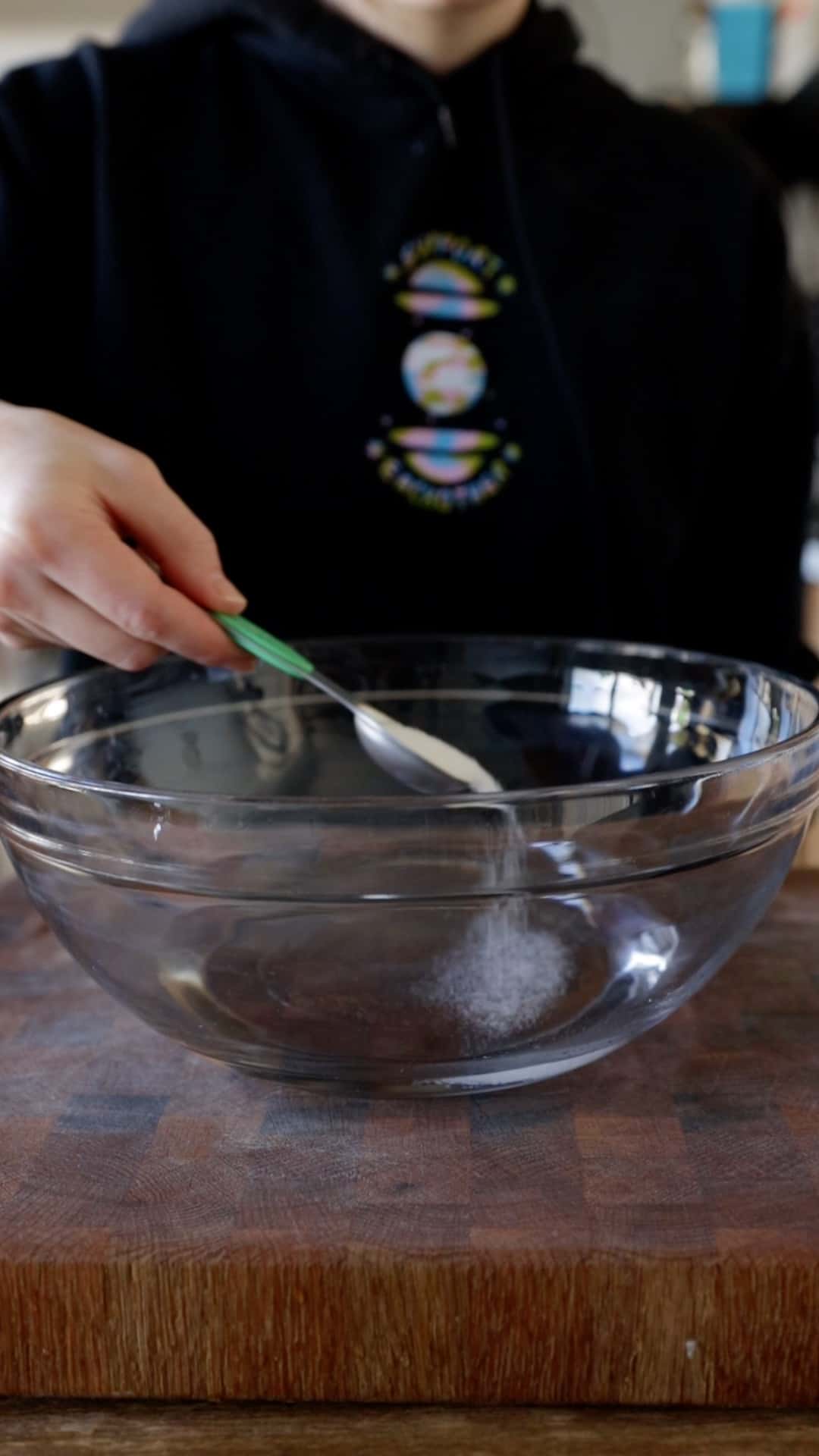
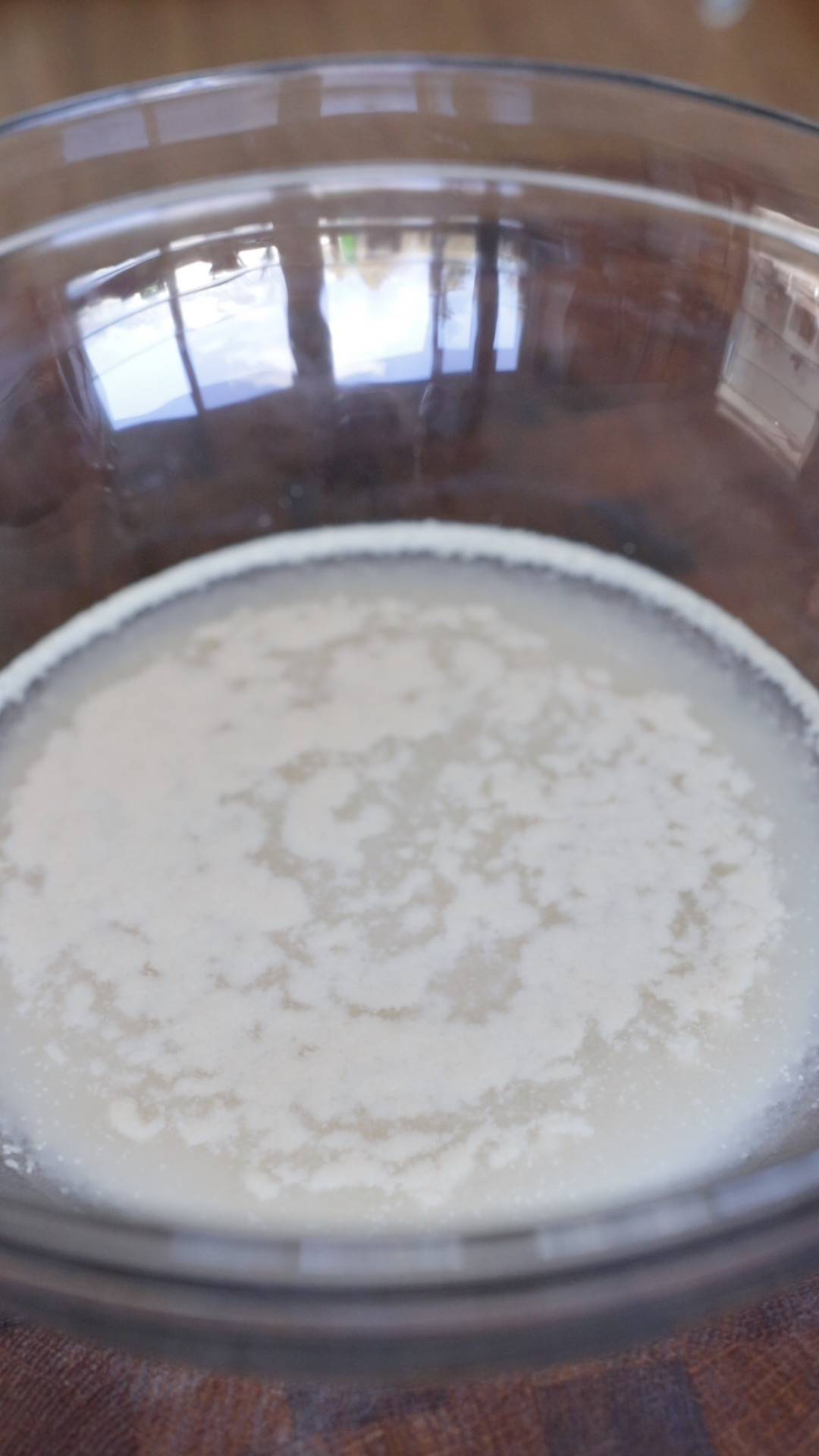
- Make the dough. This can be done by hand, or using a stand mixer to shave off a few minutes of work. You’ll want to knead the dough till it’s smooth and elastic, per usual. Depending on your particular ingredients and the humidity of your kitchen, you may need to add additional flour to achieve the right consistency. Add it 1-2 tablespoons at a time and knead well between each addition.
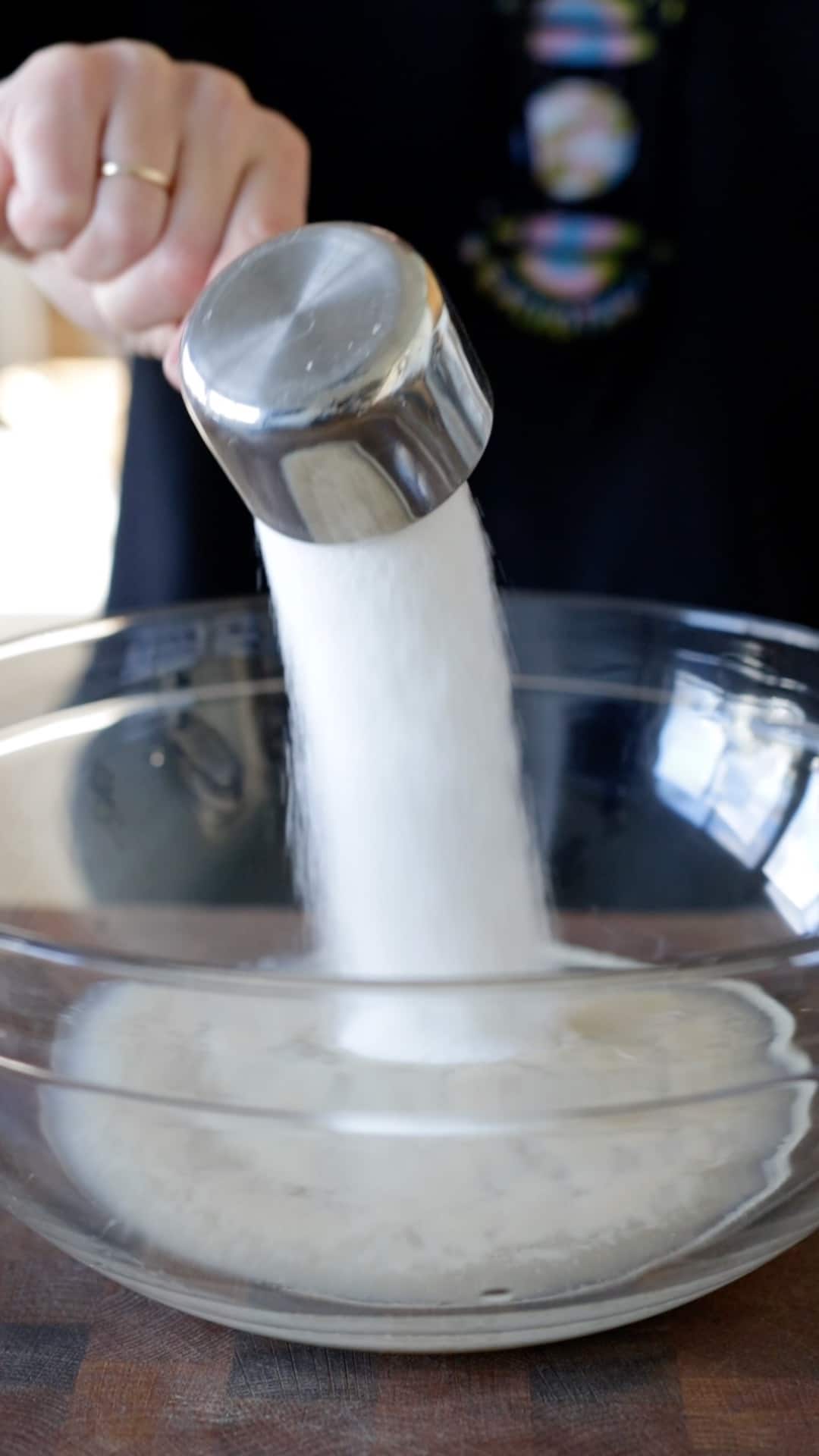
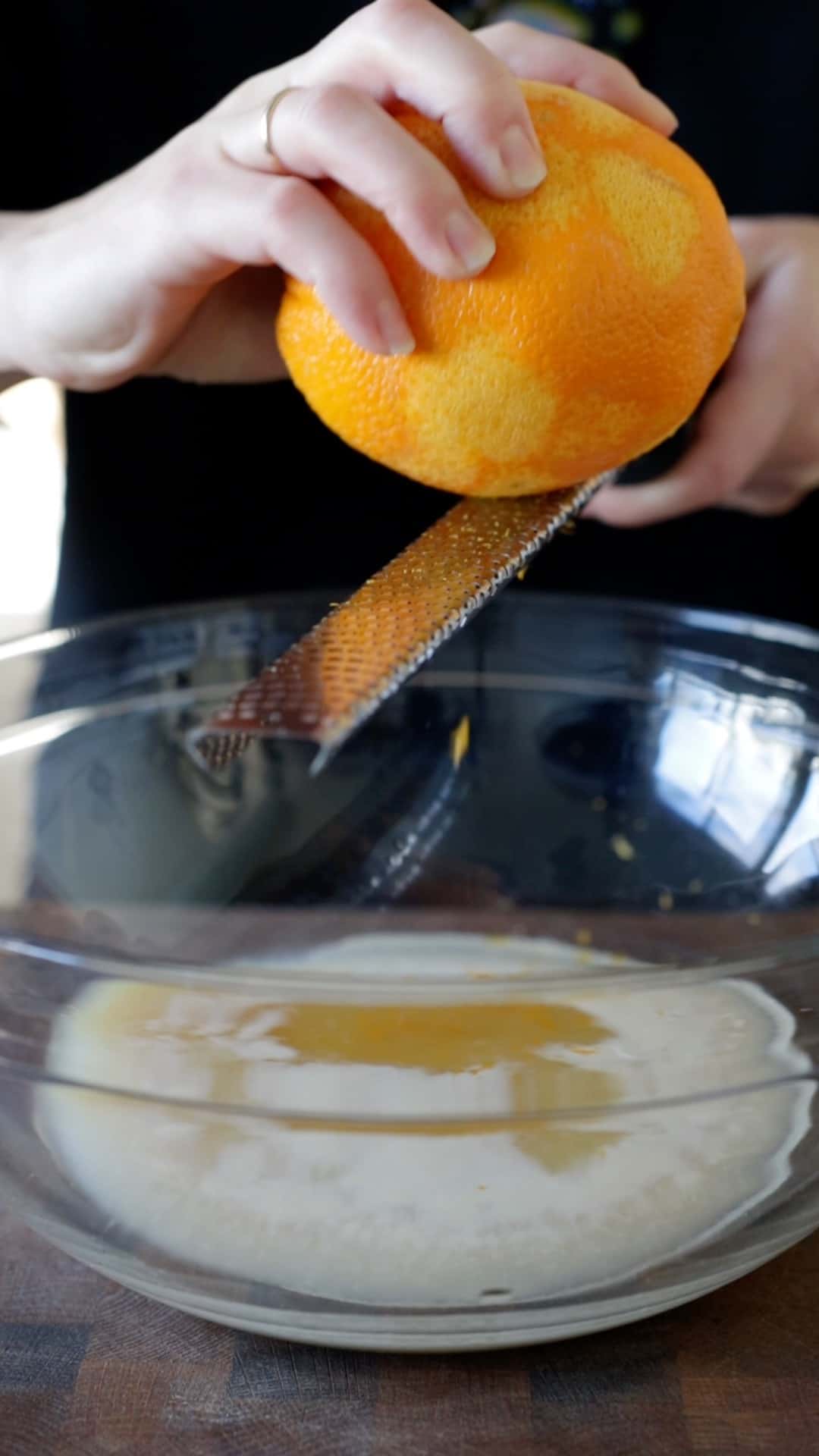
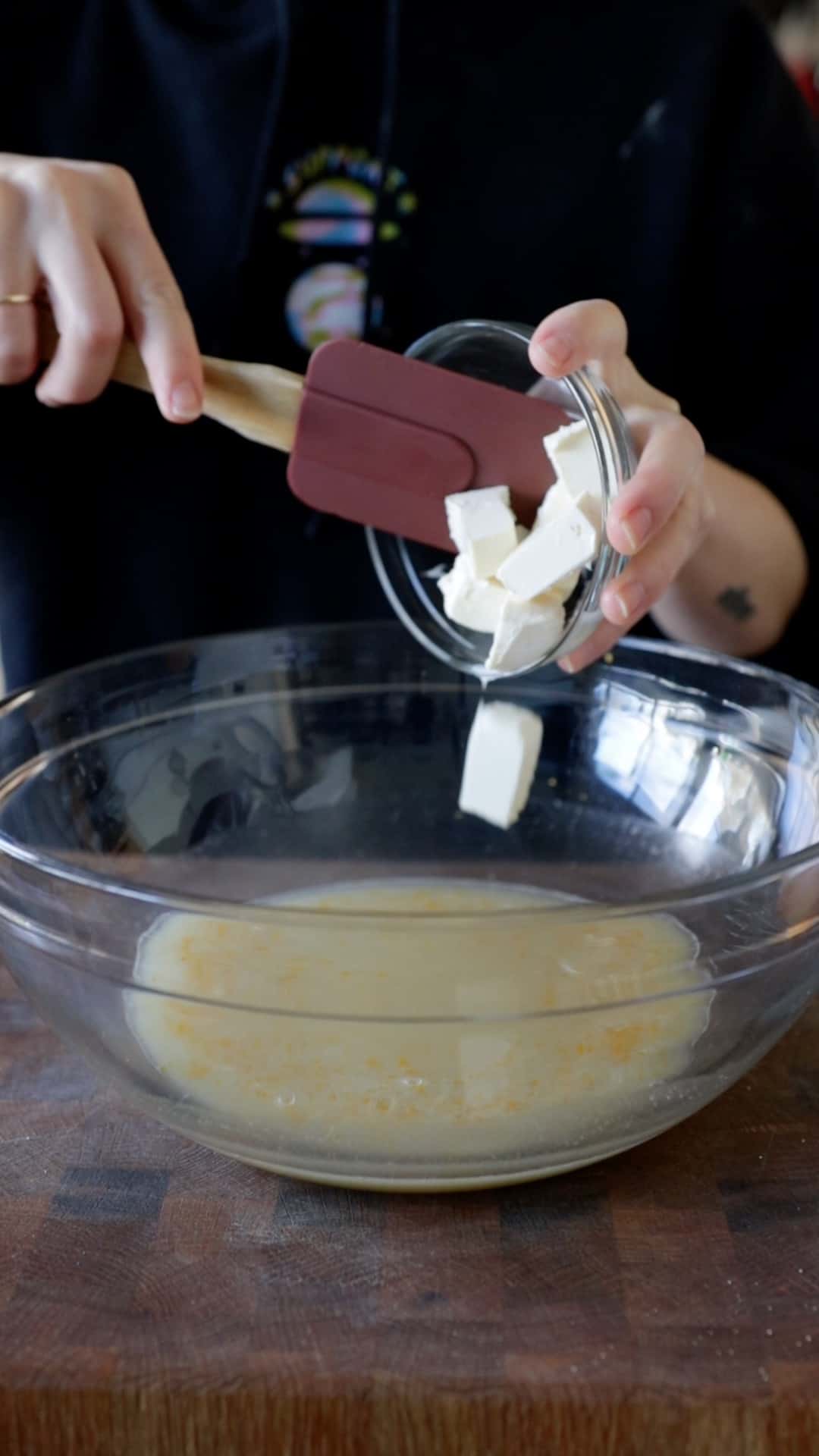
- Allow the dough to rise. As with most yeasted recipes, we’re looking for the dough to roughly double in size.
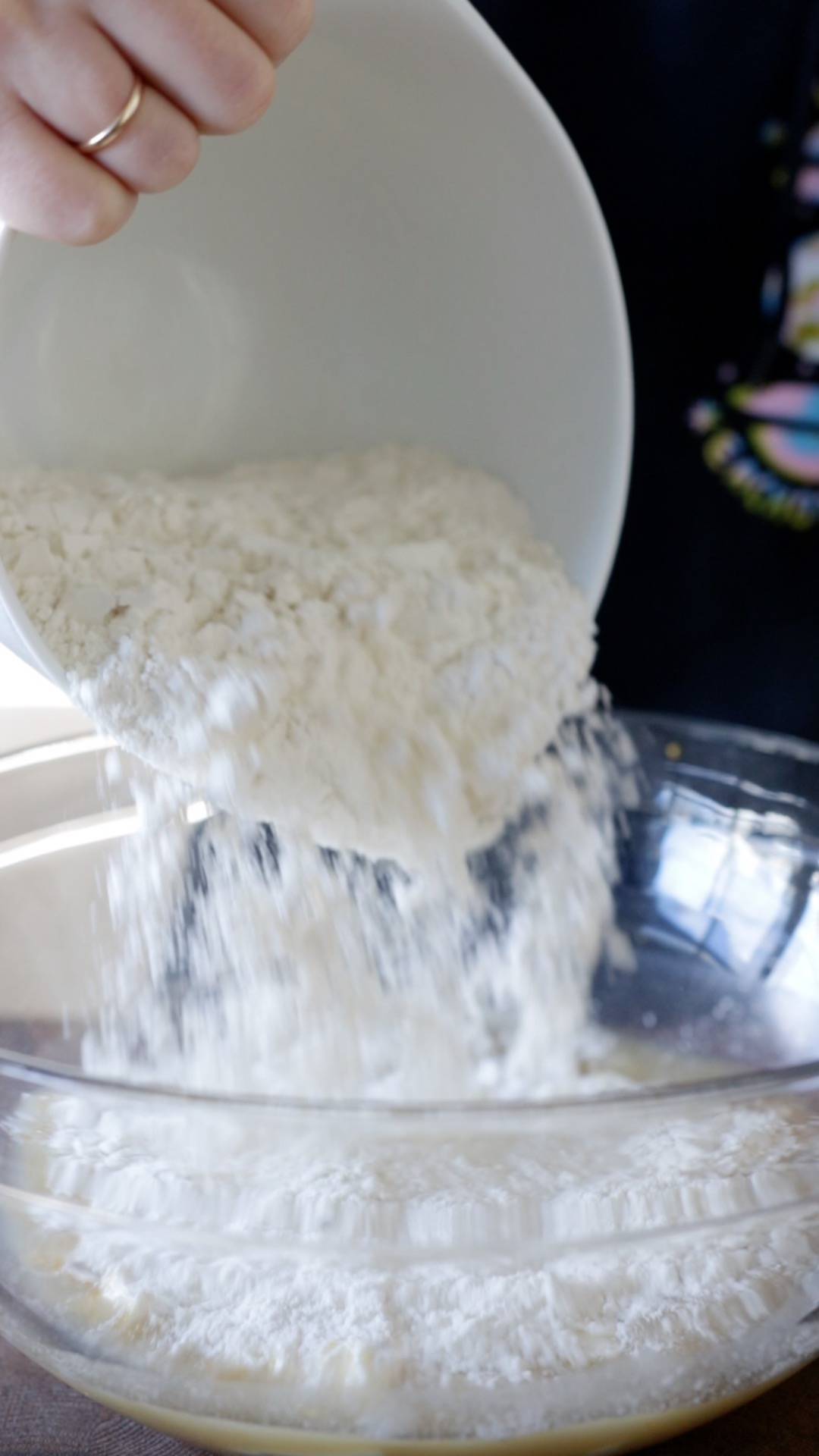
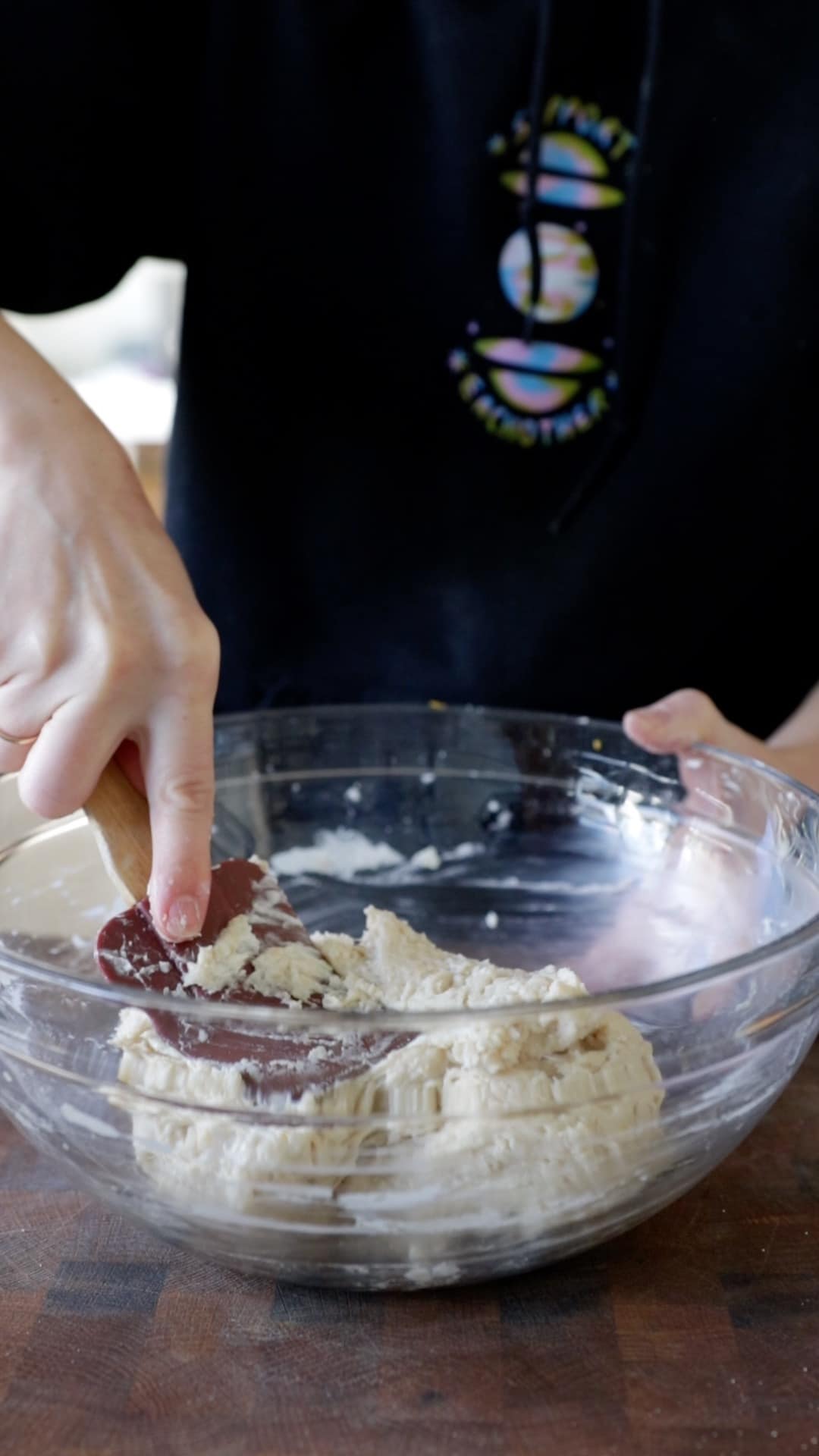

- Shape the dough into donuts. There are a few ways to do this. You can divide it into equally-sized portions and roll it into balls (what I usually do). If you find it easier, you can roll the entire batch of dough out to 1″ and use a biscuit or cookie cutter. The donuts will be a little flatter in this case but just as delicious!
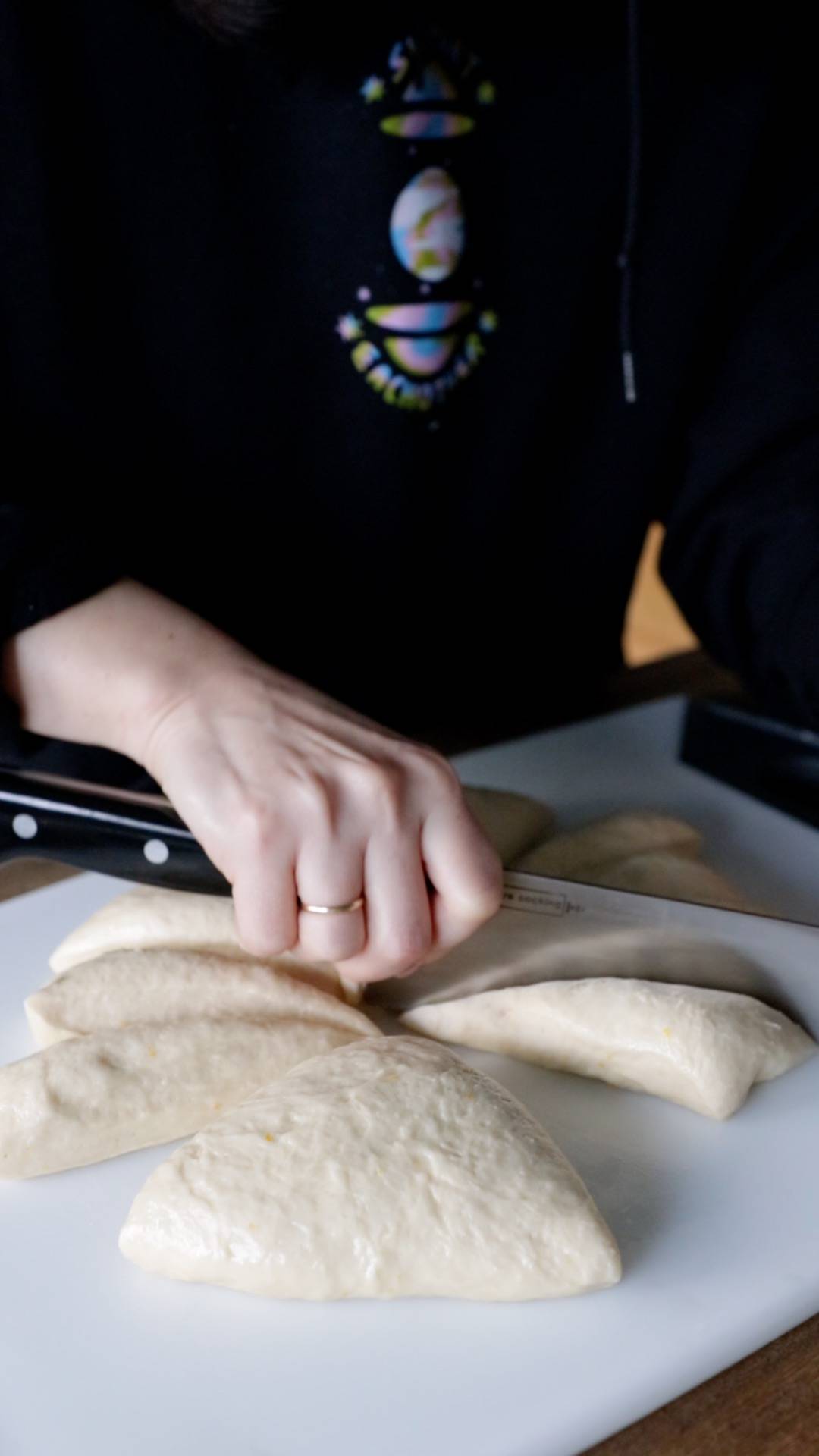

- Fry the donuts. They only need 2-3 minutes per side until they’re golden brown. I always recommend using a thermometer to ensure the oil is the correct temperature.
- Fill the donuts. Jam or jelly are the traditional filling for this sweet treat, but feel free to branch out. A piping bag and a round tip make this easiest, but if you don’t own one, snip off the corner of a ziploc.
- Powder the donuts and enjoy!
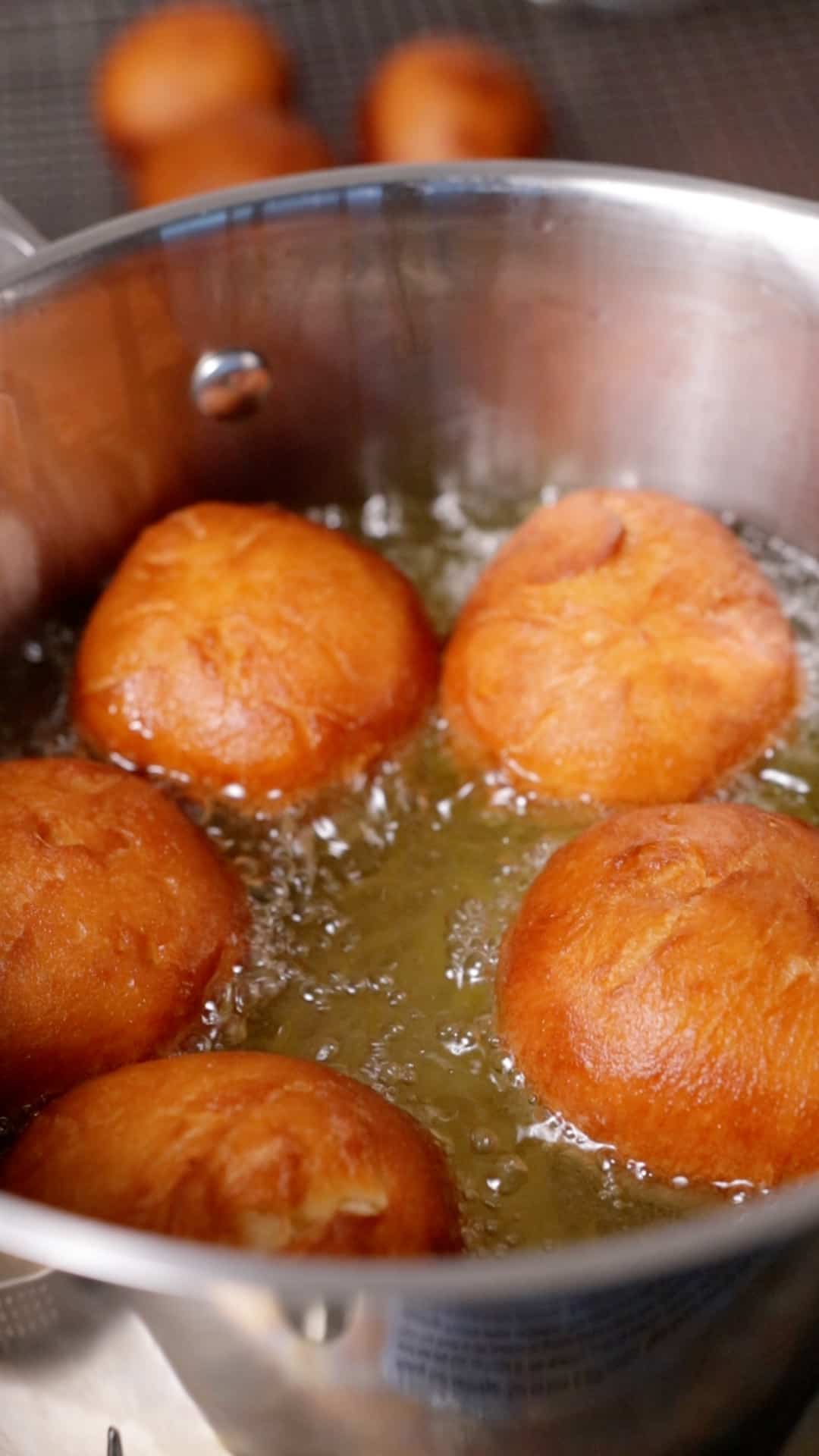
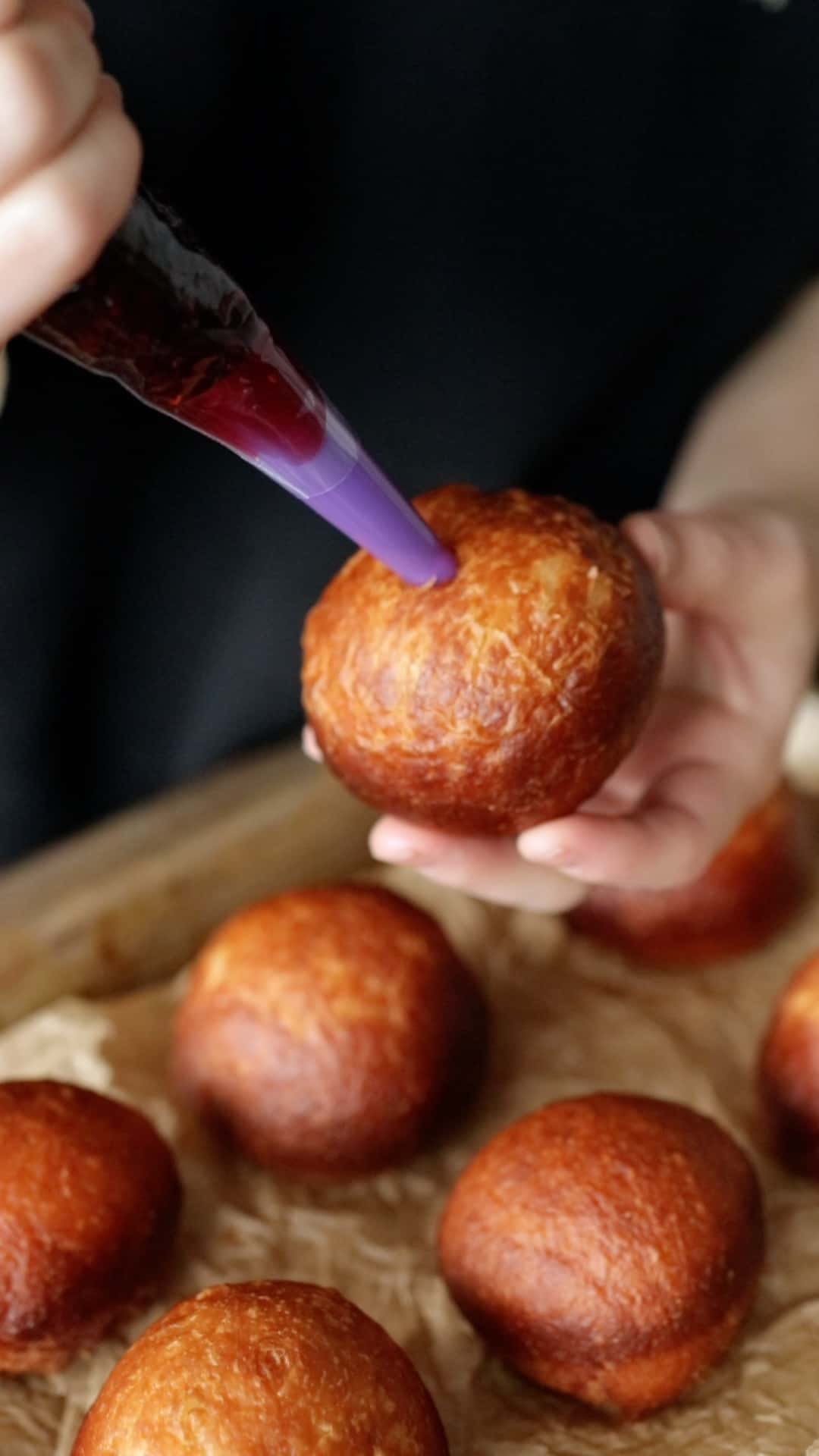

Equipment
- Heavy-bottomed pot or Dutch oven. This is what you’ll use for frying your sufganiyot. You want to use something that’s heavy and sturdy, since it will be holding a large quantity of hot oil.
- Pastry bag and round tip. This is how you’re going to get your filling inside the sufganiyot. There are some makeshift alternatives you can use instead of a legitimate piping bag, but it’s going to make the process more difficult.
- Frying thermometer. This is technically an optional piece of equipment but it’s much easier to fry food when you have a thermometer. Keeping the oil consistently at the right temperature will ensure your vegan sufganiyot are cooked properly. If it’s too hot, the outside will cook while the dough inside stays raw. If it’s too cold, the donuts will absorb a lot of oil and become soggy.
- Slotted spoon or spider. To remove the sufganiyot from the frying oil.
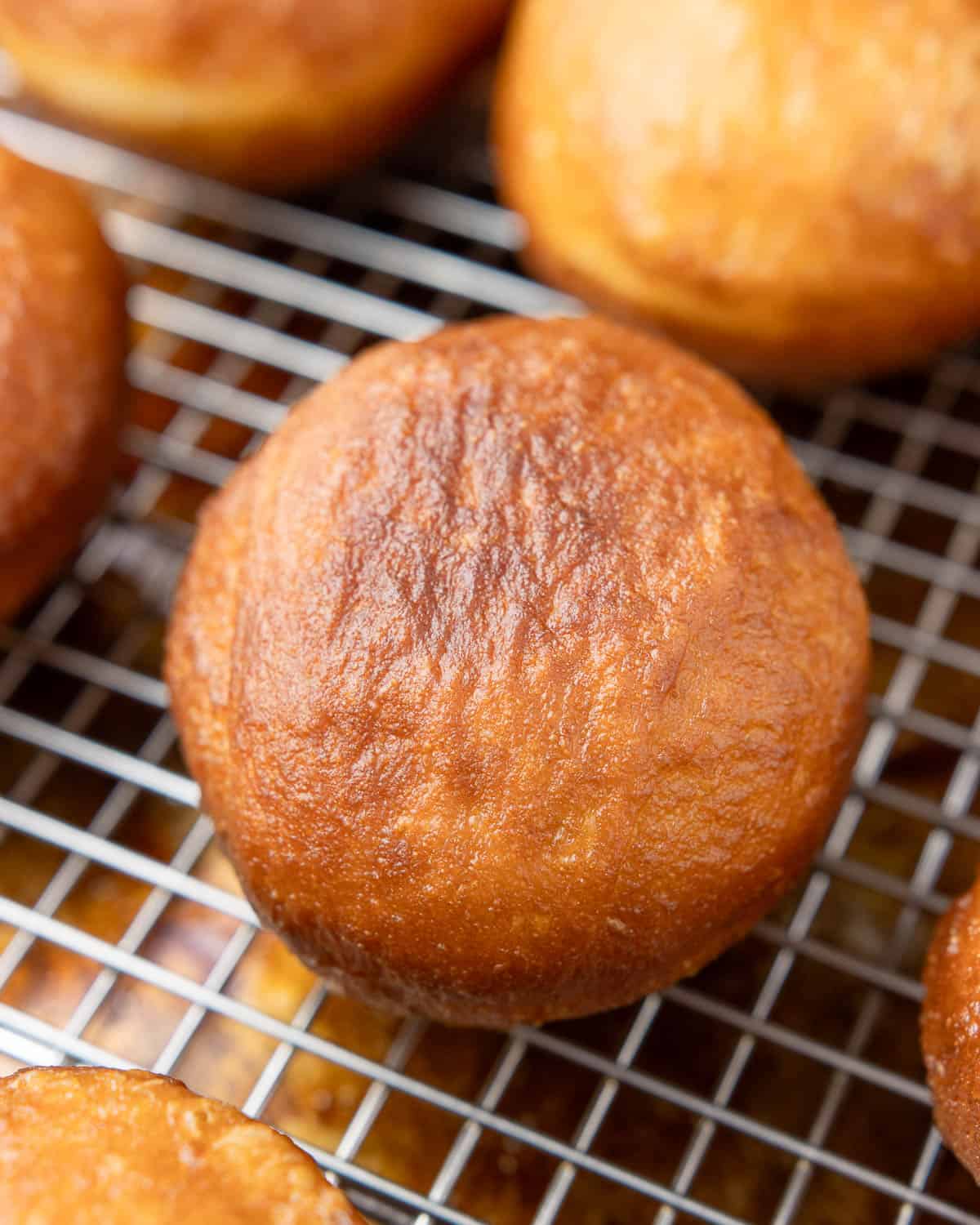
Can You Make Vegan Sufganiyot Gluten-Free?
Unfortunately it is difficult to make yeast-risen recipes gluten-free through a simple 1:1 flour substitution. Gluten is very important to achieve the right structure that makes these donuts fluffy.
Many gluten-free yeasted breads require the addition of egg whites or various starches or gums to replicate the effect of gluten. This isn’t my realm of expertise, but here is a recipe from the Loopy Whisk for Gluten-Free and Vegan Donuts that might point you in the right direction. (I haven’t tried this recipe personally.)
Recipe Troubleshooting
Why are the Sufganiyot golden brown but undercooked in the middle?
Did you use a frying thermometer? Oil temperature is very important to ensure that your donuts cook properly.
If the Sufganiyot are golden-brown but undercooked in the center, there is a good chance your oil was too hot, causing the exterior to brown before the center is fully cooked.
Why are my Sufganiyot excessively greasy?
Again, make sure you are using a thermometer to monitor the temperature of your oil. If it’s too cool, the donuts will take longer to cook and they’ll retain a lot of the oil in the process, resulting in greasy Sufganiyot.
Additionally, you’ll want to make sure not to overcrowd the pan when frying, to avoid lowering the temperature of the oil too much. Cook them just a few at a time and monitor the temperature to keep it consistent.
When removing the Sufganiyot from the oil, I like to place them on a wire cooling rack placed over a baking tray. This will allow any excess oil to drip off. (Whereas when placing them on a paper towel, the excess oil is blotted off but stays in contact with the donuts.)
Why is the dough sticky and difficult to work with?
There are many variables which can affect the texture of your dough! That’s why it’s more important to work with the texture of your particular dough and adjust as needed. Add extra flour 1-2 tablespoons at a time when kneading, to ensure your dough becomes smooth and elastic. If the dough is extremely sticky or shaggy, you knead more flour.
Here are a few variables to consider:
- Brand of flour: Flour varies brand-to-brand in terms of its protein content. Flour with higher protein (i.e. more gluten) will absorb more liquid. If your flour is lower in protein, that means you may need to add more of it to achieve the right consistency. (Protein/gluten content is the difference between bread flour, all-purpose flour, and cake/pastry flour.)
- Measurement error: Measuring by weight (rather than volume) is more accurate and will ensure the most consistent results. Flour is can be aerated or compacted, so measuring with cups can be quite inaccurate. If measuring by volume, I recommend stirring the flour to “fluff” it up first. Then spoon it into your measuring cup and level it with the back of a knife.
- Ambient humidity: Flour will absorb moisture from its environment. If you live in a very dry climate, you may need a little extra moisture. If it’s very humid in your kitchen, you may need to add less liquid or extra flour.

More Vegan Dessert Recipes

Vegan Sufganiyot
Equipment
- Pastry bag and round tip to pipe jelly
- Heavy-bottomed pot for frying (I use a cast iron skillet or Dutch oven)
- Frying thermometer (highly recommended to ensure the donuts cook properly)
Ingredients
- 1 (0.25) oz packet active dry yeast (2 1/4 teaspoons)
- 3/4 cup unsweetened plant milk OR water lukewarm (~110°F)
- 2 tablespoons water
- 3 tablespoons granulated sugar
- ½ teaspoon vanilla extract
- 3 tablespoons vegan butter softened
- zest of 1 small orange (optional)
- 1 tablespoon brandy (optional)
- 2 1/2 cups all-purpose flour more as necessary for kneading
- 1/2 teaspoon salt
- 1 cup jam or jelly of choice
- 1 quart vegetable oil for frying
- powdered sugar for dusting
Instructions
Mix the Dough
- Add 3/4 cups lukewarm milk plus 2 tablespoons water to a bowl. Sprinkle yeast over top and allow to proof for about 5 minutes, until foamy. (Do this in the bowl of a stand mixer, or in a large mixing bowl if you're working by hand.)
- In a small bowl, add sugar and orange zest. Massage the sugar and zest together with your hands for about a minute to release the citrus oils for extra flavor.
- Add in orange sugar, vanilla, softened butter, and optional brandy, and whisk to combine. Then add in flour and salt.
- Stir with a wooden spoon or spatula until dough comes together in a shaggy ball. (Stand mixer: Mix with the paddle attachment until everything comes together in a shaggy dough.)
- Turn dough out on a lightly-floured surface. Knead 8-10 minutes. A bench scraper can be helpful to keep the dough from sticking to the surface as you develop the gluten. (Stand mixer: Switch to the dough hook attachment and knead for 5-8 minutes. The dough should become smooth and elastic and "clean" the sides of the bowl.)
- If the dough feels excessively sticky or wet, or it's sticking to your hands too much when kneading, you can sprinkle on extra flour. Add more flour 1-2 tablespoons at a time, kneading to incorporate between additions, until you achieve the correct texture. Knead until dough is smooth and elastic.
- Shape the kneaded dough into a ball and transfer to a lightly oiled bowl. Cover with plastic or a clean, damp kitchen towel. Allow to rise in a warm place until at least doubled in size. This usually takes around 1 1/2 hours, but it will vary based on the temperature of your kitchen. If it's very chilly, it can take up to 2 hours.
Shape the Sufganiyot
- Punch down dough and turn out onto a lightly floured surface. You can divide the dough into roughly 12-15 portions and roll into balls, OR you can roll the dough out to 1/2" thickness and use a biscuit cutter to portion them out.
- Transfer the donuts to individual squares of parchment paper. When it's time to fry, this makes it easy to pick them up and transfer them to the hot oil without deflating the donuts.
- Cover them with plastic or a damp, lint-free kitchen towel and allow them to rise for an additional 30-45 minutes, or until visibly puffy and doubled in size. (If you poke a donut, the indentation should remain. If it springs back, they need to proof longer.)
Fry the Donuts
- Place a wire cooling rack over a cookie sheet. You will place the donuts on the rack when they're cooked to allow any excess oil to drip off. (Alternatively, you can line a plate with paper towels.)
- Heat at least 1” oil in a heavy-bottomed skillet or Dutch oven to ~350°F. Fry donuts for 2-3 minutes per side, until golden brown. (Make sure to monitor oil temperature and adjust the stove as needed. Correct temperature is very important to ensure the dough cooks properly.)
Fill the Donuts
- Allow donuts to cool. Then fill a pastry bag with jam. Poke a hole in the side or top of each donut, then pipe about a tablespoon of jam into each one.
- Use a fine mesh sieve to dust lightly with powdered sugar and serve.

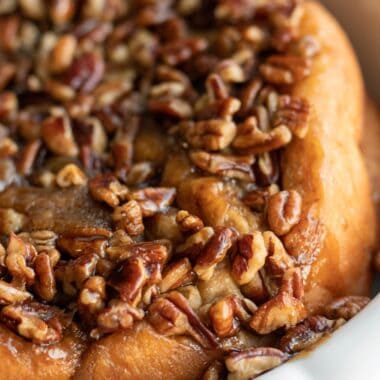
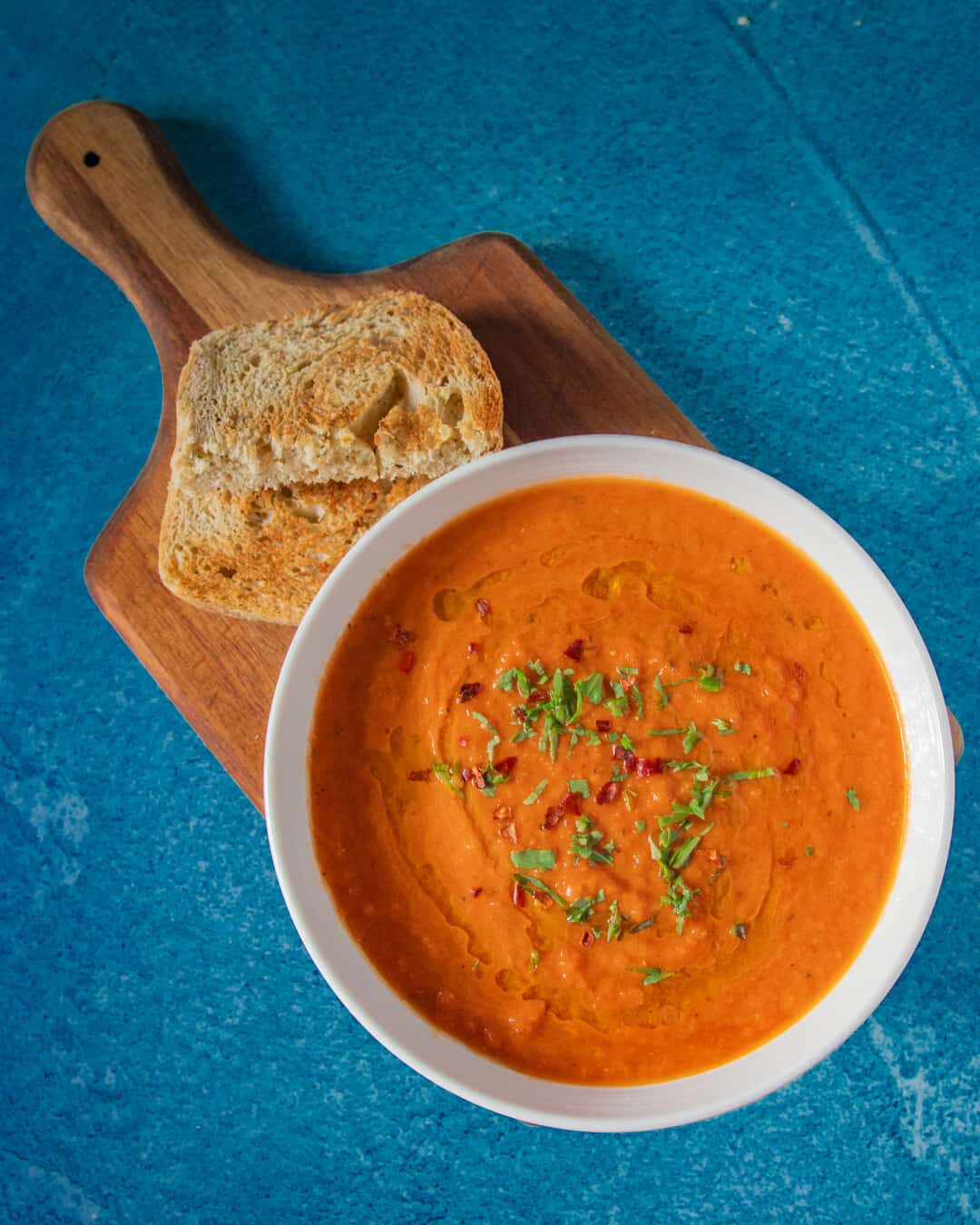

Pingback: A Vegan Hanukkah – Black Cat Consulting LLC
These were delicious! Instructions were clear & straightforward, and they turned out wonderfully. Thank you!
I followed your Instagram video and this recipe, but I can’t seem to get the frying right! Even with a oil thermometer, I find the outside gets dark too quickly without completely cooking the middle. Am I making the doughnuts too big?
Hi, thanks for the recipe! My donuts turned out ok. Not sugary enough for my taste but I’m happy they are shaped nicely and didn’t absorb too much oil. However, and maybe this is my mistake, but in your recipe I couldn’t find info when the yeast is supposed to be mixed in! Also, no instructions on how to know if the oil is hot enough without a thermometer, so I had to find that info elsewhere. But overall, thanks a lot!
Can these be made with gluten free flour?
Thanks!